From the outside of the VHS box,
there’s nothing that distinct about VULTURES. Released by Prism in 1987 and directed by prolific independent exploitation filmmaker Paul Leder (I DISMEMBER MAMA), the plot synopsis promises a fairly standard horror tale about the patriarch of a family preparing to die and his heirs bumping each other off for the inheritance – a set-up at least as old as 1927’s THE CAT AND THE CANARY.

Within the credits, however, lies the oddity that makes VULTURES unique among the many low-budget horror films of the period. Amongst the cast of the most affordable names they could get (Yvonne DeCarlo, Stuart Whitman, Aldo Ray and Eurohorror regular Maria Perschy) the final credit reads “and introducing Jim Bailey,” the real star of the film.
The “introducing” credit is a bit disingenuous, as VULTURES wasn’t Bailey’s first film, and he’d been on shows like “The Rockford Files” and “Vega$” as well. In addition, Bailey had been performing on stage for years already, headlining shows in Las Vegas with his spot-on personifications of the likes of Judy Garland, Barbra Streisand and Phyllis Diller, even performing with or for the ladies whom he portayed. A character actor and singer who specializes in female roles, VULTURES was created as something of a showpiece for Bailey, who plays six different roles, four of which are female.
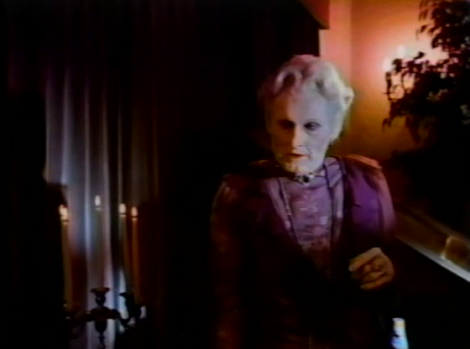
While primarily known as a stage performer, Bailey was one of the “go-to” performers for male-to-female characters in Hollywood, beyond VULTURES and to the likes of “Night Court,” “Here’s Lucy” and “Ally McBeal.” His act also transferred to Jamaa Fanaka’s outrageous PENITENTIARY III and the Shannon Tweed thriller THE SURROGATE. I had the chance to talk to Mr. Bailey about VULTURES and his other films, the ladies he’s portrayed, and his career.
The first celebrity Bailey performed as was Phyllis Diller, whom he portrayed on “Here’s Lucy” as well. “We just lost her a few weeks ago,” he said. “What a great lady she was – I loved her. Phyllis was the first one that I did. I loved comedy. I loved her, I loved her wit, I loved her look, I thought she was incredible. I related to her. We became friends – I was a fan of hers before I ever thought of doing her. I was at a party and all of a sudden I started laughing like Phyllis Diller [makes Phyllis Diller laugh], and somebody said ‘Oh my God, you sound just like Phyllis,’ and the seed was planted, and I wound up putting it together, to make a long story short. So comedy was my first trip into doing the ladies.”
“I started out as a cabaret singer, and at the time pop singers were not in style. I was a lyric tenor, and I went from Phyllis to Judy [Garland] to singing, and I was successful. And I found Barbra [Streisand] – I was given a gift, a magic wand was given to me over my head, and these people came into my life. And I kept wondering if I could do that, or if I could do that, and I could. Not everybody, but look at the people I was associated with. The ladies were, and are, all top performers. Peggy Lee, and Barbra, and Judy and Phyllis – I’m very fortunate, and very lucky to have that talent and voice, and the fact that I studied make-up on my own. I created the different ladies. I do my own make-up – I don’t have a make-up guy do any of this for me. I learned how to do it from scratch. It became my life. People ask if I’d analyzed it, and I really don’t want to. I’ve thought about it enough to the point where I haven’t gone off the deep end.“
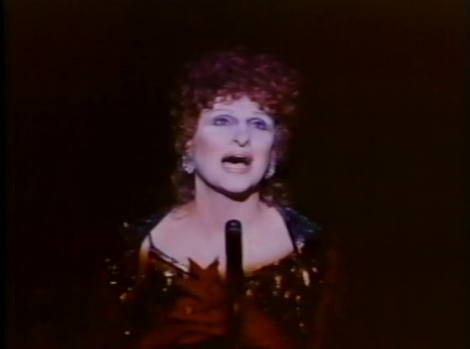
Shot in early fall of 1983 and first screened at festivals in 1984 (ignore the IMDb, which claims a 1987 release), VULTURES was filmed as VULTURES IN PARADISE – a title change made obvious by some poor graphic revision in the video credits. “I was approached by Paul Leder. He came to a performance of mine and came backstage and talked about it. He said he had an idea for this script, and the only way I can do it is if you do it, because it involves different characters. He said he didn’t know anybody else that could do that. And I said I’d be interested in that, so he did a treatment and showed it to me, and I said I’d really love to do this. Including myself, I played six different people in that.”
Among his roles were the patriarch, his elderly mother, hysterical psychic Esperanza and a Barbra Streisand impersonator, giving him a chance to perform a piece of his act. “It was exciting for me. I know a lot of it was probably a little hokey maybe. I watched it the other night again, because I hadn’t seen it for a while, and I liked it. I liked my work. I thought I did pretty good! I hate to say that and have it be like an ego trip, but I hadn’t seen it for a long while, and I sat down and I watched it again, and I thought, ‘Oh, wow!’ And I’d forgotten some of the roles that I had done, there were so many different things in it. But I was happy with it, I thought it was good. It wasn’t a great film, but I liked it. I thought it was very interesting that I could do that, to play those characters. “
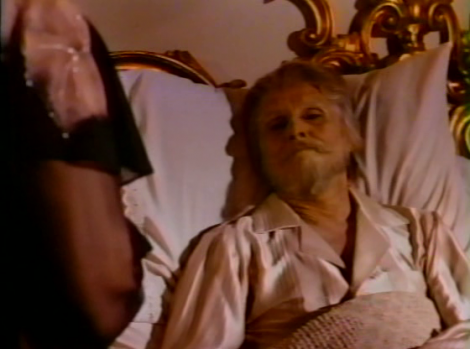
“When Paul saw me perform, and he’d seen the different ladies that I do, and he put the script together, he put himself out on a limb because he wrote the characters and thought, ‘If he can do Barbra and Judy and everything, he’s got to be able to do this as an actor.’ Because he did always call me an actor, he said, ‘You’re not a female impersonator, you’re not an impressionist, you’re an actor, one who happens to sing, who happens to do women as opposed to character-acting men.’ So he gave me free reign to the characters, and they’re so distinctive – the old lady, and the old man, and Esperanza, and Olivia Mann at the end. It was wonderful! And when I read the script at the end I said, ‘This is great, Paul!’ So we worked on it together and we sort of invented the characters together. At least the original characters, like the old man and the old lady. Of course the old man didn’t have too much say, since he was dead!”
“Because we shot it in Los Angeles, and it was a particular house – when I watched it the other night, I was trying to figure out what house it was that we filmed it in, and I can’t remember. It was a Spanish house, and I don’t know if it was the director’s house or not. We had a room in the house where I did my make-up, and I was there a lot of hours getting ready. It was a long shoot because of the makeup. I had a ball, though. I had a great time doing it. The people in the cast were fun.”
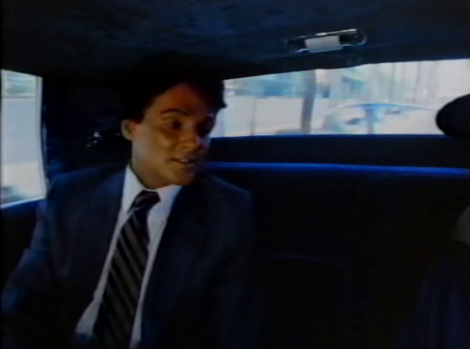
In the climax of the film, Bailey gets a key scene of prime vamping as Stuart Whitman looks on. “That was like a Norma Desmond moment. That was probably the only time [Stuart Whitman and I] had a lengthy scene together. I didn’t have a lot of scenes with him. He was okay, he was a nice guy. His son Kipp was in the film also [playing Whitman’s brother]. Most of the cast was nice. Maria Perschy and Carmen Zapata, she was nice. Professionals.”
Also among the cast was former Paramount starlet Yvonne DeCarlo, best known her role on “The Munsters.” “She was a trip. She did get a little bored. She’d be yelling, ‘Is he ready yet? Are we ready? What’s happening?’ She’d come to the set, and I’d be making up, and I’d say, ‘You came too early.’ And she’d say, ‘Well, what do I do? Come at night?’ She was fun. She was a bit huffy. Yvonne DeCarlo came from that golden age of Hollywood when she was very young, and she became very popular and a very famous actress, and this wasn’t what that was. It was a low-budget film and everybody was sort of fending for themselves, and she had to get used to that. There wasn’t a limo to pick her up every morning, she had to get herself there. But she was fine after we settled in. She was okay. But she had that ego thing, which I understood totally.”
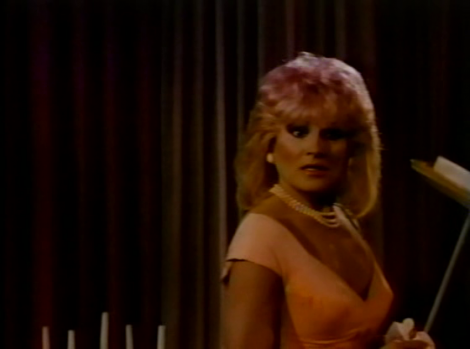
“I think she did the film because of the money and the exposure. She complained a lot, but I understand that. She went from one place to another place and you have to deal with that in this business. She wasn’t Meryl Streep. She was a beauty, and she wasn’t a great, great actress but she was very well-known, very famous. And then times changed, and she went from one husband to another husband and all kinds of things, and wound up in that film. But you have to be grateful.”
In one memorable scene, Bailey plays three characters in one scene – but two of them are dead and in coffins! “Those scenes in the coffin – no, no no, that wasn’t my favorite time of shooting, let me tell you! I’m reading it and we got to the point where it was time to shoot those scenes, and here I come into the room with the coffins and I said, ‘I can’t do this, Paul. Do I have to get into the coffin?’ and he said, ‘You read the script, it’s not going to work unless you get into this coffin.’ It was really a stretch for me to do that. And I did it in one take – we did it and I got out! It’s strange. Have you ever done that, climbed into a coffin? At least now I’ve tried it out so I know what it’s like now! [laughs] That’s terrible. But that was part of the movie.”
Being a lower-budgeted film, however, meant that the exposure from it was minimal. “It wasn’t a big thing, unfortunately. It should have had more attention, I think. But I guess it was a B-movie. It wasn’t Gone With the Wind, let’s face it. But it had a run in Hollywood, and a lot of people saw it. It played here, and it didn’t play in Podunk, Idaho, but I’m sure it played in Chicago and New York and Florida. And I got a lot of mail about it, from people that liked what I did, and I got some work from it, too, from people who called and said, ‘Oh, we didn’t know you did so-and-so,’ and I said, ‘I never did so-and-so until I did the film.’ But the problem is that the parts I played in the film weren’t singing parts. It was fun to do, I learned a lot, and when you’re doing a film, it’s totally different from performing in concert. But I liked it a lot.”

In Don Carmody’s THE SURROGATE, a 1984 thriller about a married couple who bring in a sex surrogate in order to revive their sex life while a serial killer keeps offing random folks around them, Bailey plays Eric, the best friend of the wife, played by Shannon Tweed. The role is a bit of a red herring, as he occasionally appears as a woman outside of crime scenes, but it does serve as a good showcase for Bailey’s voices, including Streisand, Zsa Zsa Gabor, and Bette Davis, which he switches between constantly when giving Tweed advice. At one point they go to see MYRA BRECKENRIDGE! Art Hindle plays the hubby and potential murderer, referring to Eric as a “lunatic faggot,” and Michael Ironside plays a detective.
“The Surrogate. Shannon Tweed was in that. It’s been ages since I’ve even thought about that one. I was across the hall from her in the film, and somebody was committing these murders. Shannon Tweed and I had fun. She had come out of the Hugh Hefner school of the dance, so to speak. She was one of Hef’s babies.“
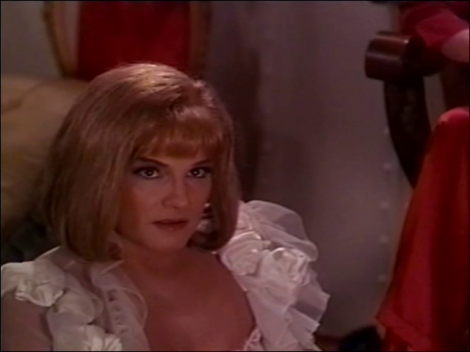
Jamaa Fanaka’s hard-to-believe PENITENIARY III is the final chapter in Fanaka’s story of “Too Sweet,” played by Leon Isaac Kennedy, a boxer who keeps winding up in prison. Despite Bailey playing a transgendered prisoner named Cleopatra, who wears ‘80s glamour outfits and sounds like Brenda Vacarro, and is the “girlfriend” of imprisoned mafia boss Anthony Geary, he’s at best the third-most outrageous character in the film. Geary himself takes the cake, as a preening, psychopathic, white-fingernailed kingpin who sets up Too Sweet into going back into the ring. The other contender is Midnight Thud, played by wrestler The Haiti Kid, a martial arts-using, constantly sweaty, crack-addicted little person rapist clad only in a leather jock and collar. He’s also easily distracted by oranges, and two-thirds of the way through the movie, he befriends Too Sweet and trains him to harness his energy! LAST AMERICAN VIRGIN star and future BURLESQUE director Steve Antin co-stars, and Danny Trejo beats the crap out of him.
“Oh my God! PENITENTIARY III! I was trying to find that damn film the other night. I’ve got it here in my library someplace, but I couldn’t find it. Cleopatra! We had laughs. We had a great time on that film. Jamaa Fanaka was the director. It was really bizarre. That came after VULTURES, and I think somebody had seen VULTURES and turned [Fanaka] on to it. He got in touch with me through my agent about doing the film, I think that’s how it came to be.”

In a 1986 interview with Bailey conducted upon the film’s release, “I play this guy who’s been imprisoned for murder and who’ll never get out. Tony’s this rotten Mafia kingpin who makes me over into what he wants–a woman. He keeps me coked-up all the time… It’s so bizarre…” Geary also forces Bailey to try to seduce star Leon Isaac Kennedy, and to do a strip number for the entire prison population. “All these guys start screaming and they begin tearing off my clothes…”
Unfortunately, these scenes and Cleopatra’s story arc seem to have been mostly cut from the final, 91-minute film, reduced Bailey’s part mostly to shots reacting to Geary’s outrageous behavior, though the sense of Cleopatra being increasingly irritated at his behavior does come through. When asked about the scene, Bailey remarked, “That’s right! I think a lot of it was trimmed, unfortunately, because it was an urban film. [Leon Isaac Kennedy] wanted an audience screening kind of thing. They were really intimidated with me because of what I did, what I created. A lot of people are very intimidated, and I understand that, but that’s what it’s about. So you get into a situation when you’re doing a film with other actors, and I’m doing a character that’s really strong, they get a little funny about it. Which I understand, but that’s their problem.”

“I liked to do that film. It was very hard to do that one, because it was in prison and all that crap, but it was okay.” In the 1986 interview, Bailey jokes that “This is one of those films where no one under 35 will be admitted into the theater.”
At the time, Bailey was doing a number of television roles as well, including Dan’s transsexual best friend on “Night Court.” “I did a lot of television stuff. I loved Night Court, with John Larroquette. That was a good show, it got a lot of attention. They would take their chances with me in a lot of things like that. But it worked out okay. But as I said, I’m not a female impersonator, I’m an actor. I think the quality of the work was very good.”
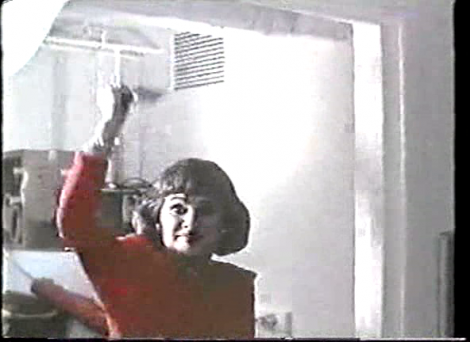
Bailey is currently preparing for a performance tour in 2013, where we will be performing across the county as his best-loved persona, Judy Garland. In the meantime, he’s also working on his autobiography. “I’m working on it. It’s not easy. I want to write down everything, and I have to remember not to dwell on too many things, but I’m having a very interesting life and I want to write about it. And going from being a singer to doing what I’ve been doing for the last many ,many years, and trying to explain that, about how I do it. It’s not easy! So I’m slaving away at it. It’s going to be a thick book, I can tell you!”
Thanks to Mr. Bailey for the interview! Click here to check out his website!
KEEP THE POPCORN BUTTERED AND BURNT,
P
- [THE BIG QUESTION] WHAT’S YOUR FAVORITE FEMALE ENSEMBLE IN MOVIES? - July 22, 2016
- [IN THEATERS NOW] THE BOY (2016) - January 24, 2016
- Cult Movie Mania Releases Lucio Fulci Limited Edition VHS Sets - January 5, 2016

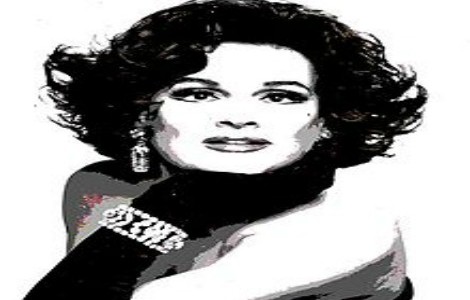




No Comments